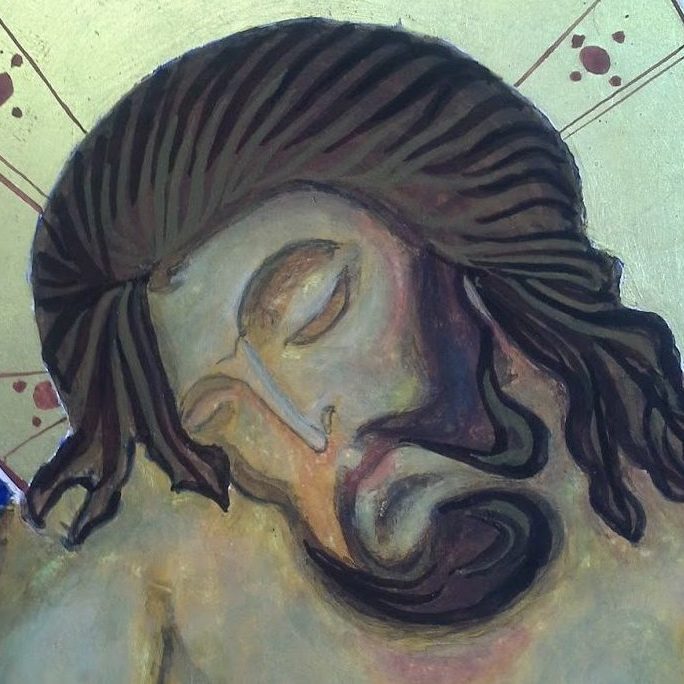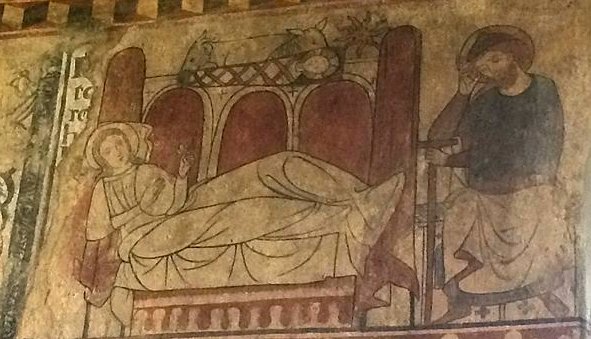As you know, I usually bring a picture to talk about on Christmas morning. This year’s is a wall painting from a church in a little place called Easby, near Richmond in N Yorkshire. These medieval paintings were whitewashed over in the Reformation and were uncovered in the middle of the 1800s.
What struck me about these paintings was how exhausted everyone is. Mary seems to be completely drained of any colour – as if someone pulled a plug and all the blue of her robes, all the tones of her skin and hair were drained away until she is completely white. Joseph seems to have fallen asleep propped up on his walking stick, and even baby Jesus appears to be snoring. Perhaps the animals are awake? Who knows?
They’re tired because they had a long journey to make in the last days of Mary’s pregnancy. They had to travel to Bethlehem which is miles from anywhere and up in the hills – steep roads to walk, and then no room at the inn, and so, birth in the stable. Birth is exhausting, even without all that mess to deal with.
Exhaustion is something that has crept up on us in the last two years of Covid and all its accompanying trauma and tragedy. It’s not just adults – children are tired and stressed, routines are disrupted, plans scrapped. Adults are doing their best to hold things together and make things feel as normal as possible, but this is demanding. And we’re exhausted. All of us.
And, in the midst of all this exhaustion and disruption and mess, comes the Christ-child. The coming of Jesus is precisely the way God comes to us – in the hard times of our lives, in the mess, in the desperation, in chaos, when we’re completely drained or asleep standing up, propped up on our walking sticks – he quietly slips in. God comes. In the mess and exhaustion, Jesus comes among us.
I’m not sure what was written on this wall before the painting was done, but you can see a bit of earlier writing just above Mary’s head to the left. This seems significant too – God came to us not as a written piece of theology, maybe some rules to follow, but as a human to share in our humanity.
Animals have featured in nativity scenes from the very earliest of days: in fact some of the very earliest depictions just have Jesus in the manager, a cow and a donkey – no Mary or Joseph. This seems to be becoming more and more relevant. We humans have always thought that the nativity was just for us – a human affair. God became human – one of us. I think we are now challenged to think about Jesus becoming part of creation – the ox and the ass, and even what appears to be a starfish in this picture, are part of God’s intention for the Incarnation. It’s not just us he came to save – the creator had the whole creation in his sights.
I think the starfish is probably meant to be a star, but wouldn’t it be amazing if there was really a starfish at the nativity – what a story it would be able to tell!
Tweet
